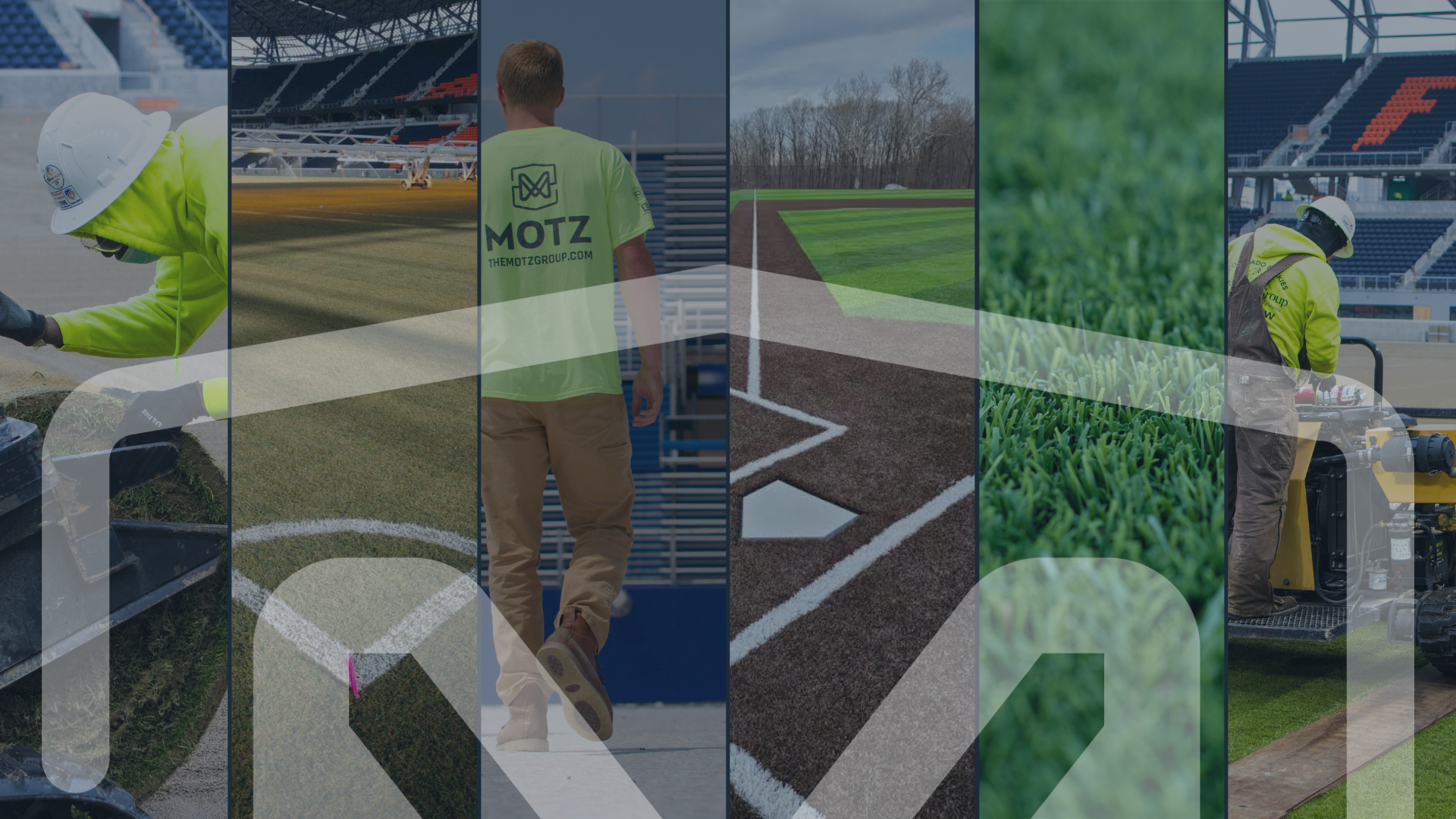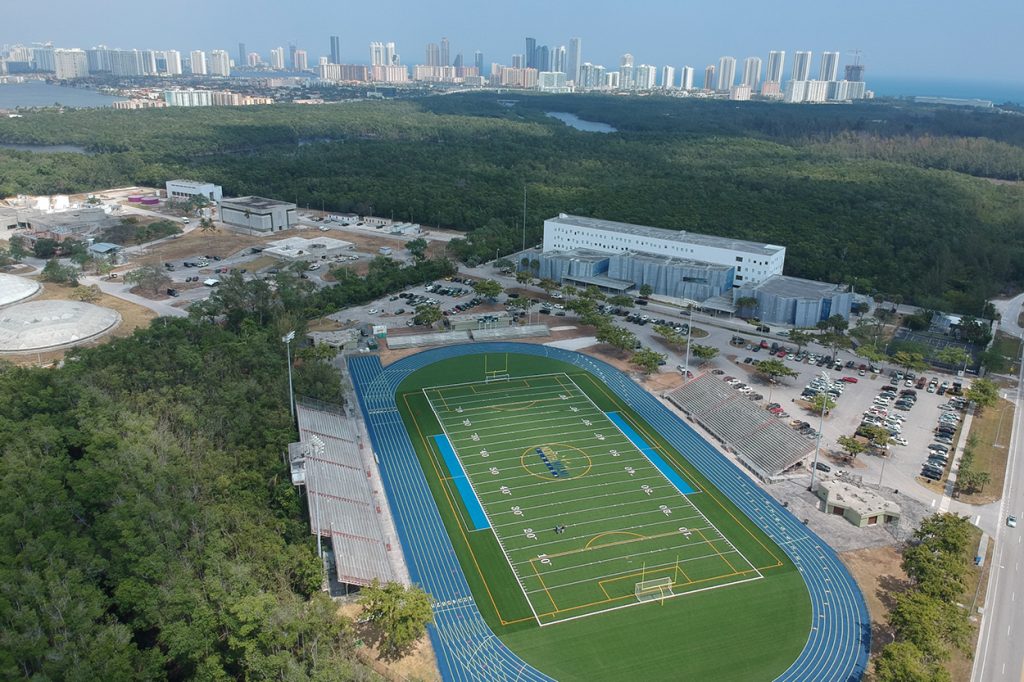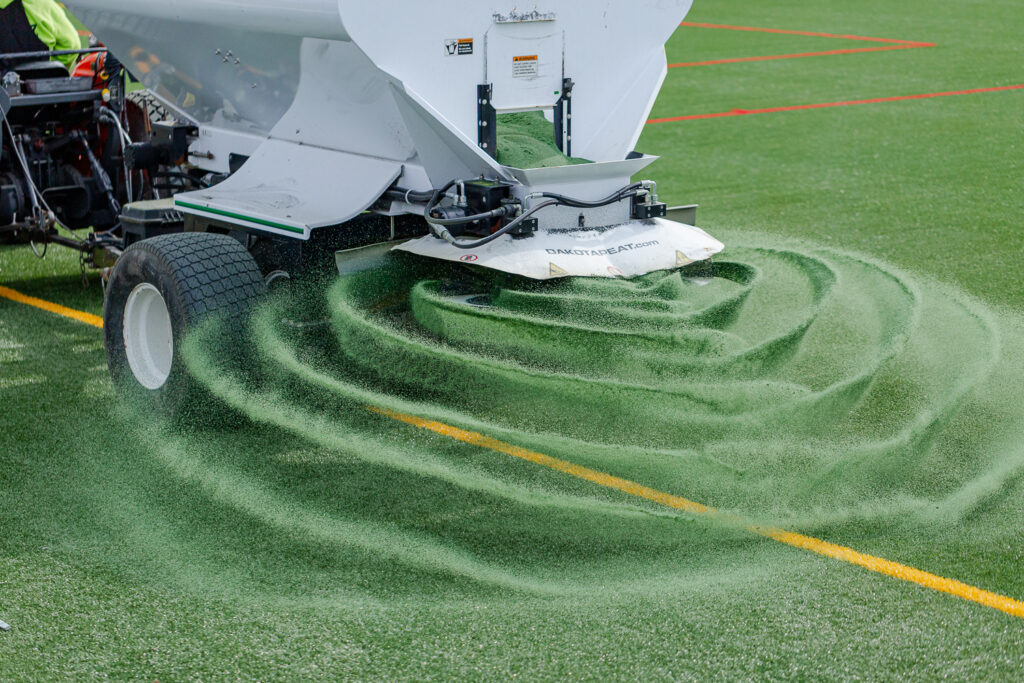
Sports Field Blog
Subscribe To Email Updates
Subscribe to our weekly newsletter and we’ll send updates straight to your inbox
What Does a Great Synthetic Turf Sports Field Maintenance Routine Look Like?

Establishing a Great Turf Sports Field Maintenance Routine
In part 1 of this blog series, we discussed the do’s and don’ts of synthetic turf sports field maintenance. In Part 2, we are taking a closer look on the key areas of maintenance you should conduct regularly.
Regular turf maintenance is actually quite simple, especially compared to the protocol for natural grass field maintenance, which demands much more time, energy, and money.
The main task involved in artificial grass maintenance is grooming, an uncomplicated practice of raking a commercial turf brush over the entire infilled surface. Be sure to accompany grooming with careful observation. Look for changes to your infill levels and any damage to the seams, carpet, or inlay.
How often do you need to spend time maintaining your field?
You’ll want to groom your artificial grass sports field one time for every 40 hours of play, and it typically takes school and recreation facilities two weeks to log that many hours of use during a regular sports season. Additional grooming is necessary when the frequency or intensity of usage increases.
What is the benefit of routine grooming of your artificial grass turf system?
Routine grooming keeps the surface free from debris and also ensures that your synthetic turf system performs optimally.
Routine brushing simultaneously achieves three objectives:
- Keeps infill layer uniform in its distribution since infill becomes displaced with regular usage, especially around heavily-trafficked areas
- Ensures that the fiber is protected and that the exposed part of the fiber is uniform in its direction and positioning
- Removes litter, leaves, dirt, etc.
The realized benefits from routine grooming are:
- Consistent footing and ball bounce throughout the surface
- Maximum aesthetic appeal
- Lengthened life expectancy
Checking Turf Infill Depth
Maintaining proper infill depth is critical to your field’s long life and performance. Measure and compare infill levels with an infill depth gauge to ensure they are consistent and at the optimal height.
How to use an infill depth gauge:
STEP 1 Turn black knob to loosen depth gauge
STEP 2 Place white footplate firmly on infill surface
STEP 3 Slide center shaft down until it makes contact with turf backing
STEP 4 Lift out and read gauge in inches or millimeters
STEP 5 Note, you should check 2 or 3 areas at each location to get the average infill for that test area
STEP 6 Test wear areas more frequently as these areas are usually where the infill is dispersed more frequently
Check out this informative video for step-by-step visual instructions.
Also, keep in mind that most infills do not break down, they often are just redistributed to other areas of the playing surface. Proper grooming will help to even out the infill better than the addition of more infill.
The optimal maintenance plan essentially comes down to basic grooming and observing. With a little bit of attention and care (and the right infill), your artificial grass turf sports field will perform well for over a decade!
Do you have additional questions about the maintenance practices of your synthetic turf sports field? The Infills team is happy to help; reach out today.
Similar Blogs



